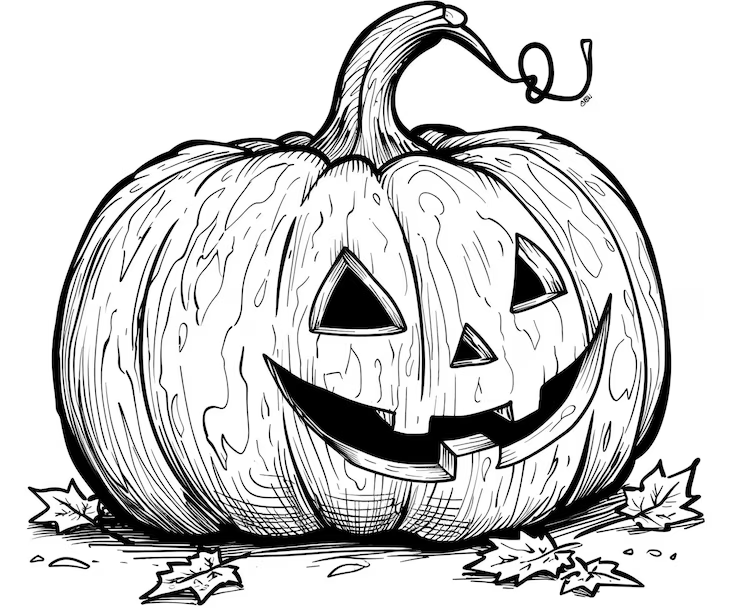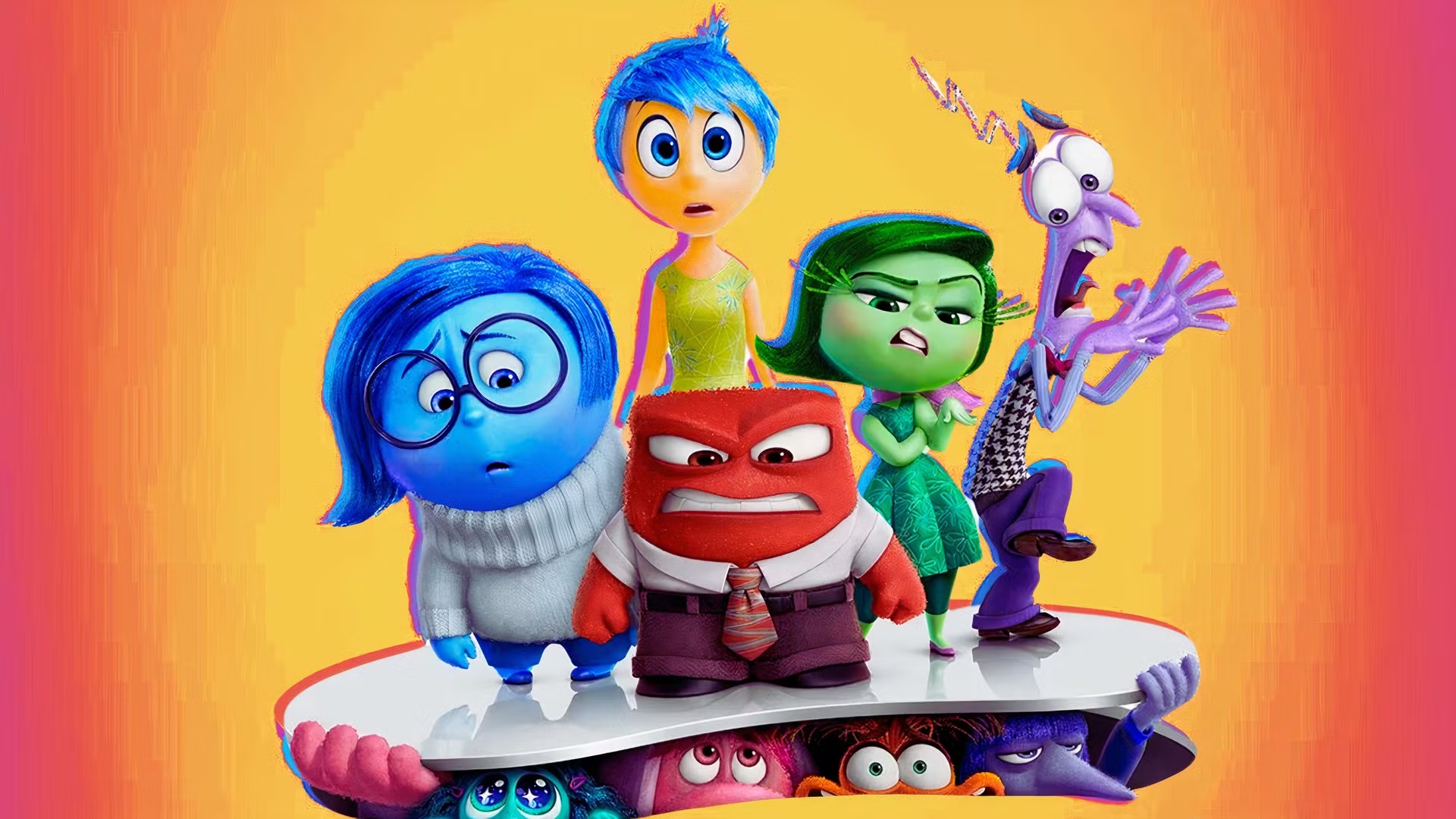Introduction
Drawing pumpkins can be a delightful and rewarding artistic endeavor. Whether you’re preparing for Halloween, celebrating the fall harvest, or simply expressing your love for this iconic gourd, the process of creating a beautiful pumpkin drawing allows you to explore your creativity. By embracing the unique shapes, textures, and colors of pumpkins, artists can capture the essence of autumn in their work. This blog post will delve into various techniques, tips, and sources of inspiration to enhance your pumpkin drawing skills. As we navigate this creative journey, you’ll discover not only the artistic aspects of drawing pumpkins but also the personal satisfaction that comes from bringing these charming symbols of the season to life on paper.
Understanding the Anatomy of a Pumpkin
To begin your journey into pumpkin drawing, it’s crucial to understand the anatomy of a pumpkin. At first glance, pumpkins appear simple, yet they possess an intricate structure that can significantly enhance your drawing’s realism. Observe the shape of a pumpkin, which often features a round, plump body with slight variations in size and curvature. Notably, the pumpkin’s surface displays unique ribbing that runs vertically from top to bottom, giving it character and depth. When sketching a pumpkin, focus on capturing these subtle details, as they will bring your drawing to life.
Additionally, the color of a pumpkin varies widely, with shades ranging from vibrant orange to pale yellow and even green. These color variations can be influenced by the pumpkin’s ripeness and the specific variety you are depicting. For instance, some pumpkins boast a deep orange hue, while others may have a mottled appearance, showcasing both green and orange tones. Understanding these nuances will help you choose the appropriate colors for your drawing, allowing you to achieve a more authentic representation of this beloved fruit.
Moreover, don’t overlook the pumpkin’s stem, which is an essential part of its anatomy. Typically green and slightly twisted, the stem adds an organic touch to your drawing. Pay attention to its texture and shape, as these features can enhance the overall composition. By considering these aspects of a pumpkin’s anatomy, you’ll be better equipped to create a captivating and realistic pumpkin drawing that captures the spirit of the season.
Choosing Your Drawing Materials
Now that you have a grasp of pumpkin anatomy, it’s time to select the right materials for your drawing. The choice of materials can significantly impact the final outcome of your artwork, so consider your preferences and the techniques you wish to employ. For beginners, graphite pencils are an excellent starting point. They offer a range of hardness levels, allowing you to create both fine lines and darker shadows. As you gain confidence, you may explore colored pencils, charcoal, or pastels, each providing a unique texture and depth to your drawings.
If you opt for colored pencils, select a set with a wide spectrum of colors to accurately depict the various shades found in pumpkins. A high-quality set will allow you to blend colors seamlessly, giving your drawing a more polished look. Additionally, consider investing in a good quality sketchbook or drawing paper. The texture of the paper can influence how your chosen materials interact, so choose one that complements your drawing style. Smooth paper works well for fine details, while textured paper can add an interesting element to your artwork.
Furthermore, don’t forget about the importance of erasers and blending tools. Kneaded erasers are particularly useful for creating highlights or correcting mistakes without damaging the paper. Blending stumps or tortillons can help you achieve smooth transitions between colors and values, enhancing the overall realism of your pumpkin drawing. With the right materials in hand, you’ll be well-prepared to embark on your artistic journey.

Exploring Different Pumpkin Varieties
As you prepare to draw pumpkins, consider exploring various pumpkin varieties to inspire your artwork. Each type of pumpkin has distinct characteristics that can influence your drawing style and approach. Traditional orange pumpkins, such as the Jack-o’-lantern variety, are iconic symbols of Halloween. Their classic shape and vibrant color make them popular subjects for artists of all skill levels. When drawing these pumpkins, focus on capturing the roundness and ribbing, as well as the way light interacts with their surfaces.
In contrast, heirloom pumpkins, like the Blue Hubbard or White Ghost pumpkins, offer unique shapes and colors that can inspire creative interpretations. The Blue Hubbard, with its bluish-gray skin and irregular shape, presents an exciting challenge for artists. Capturing its texture and color variations can lead to stunning results. Similarly, White Ghost pumpkins, with their pale, smooth skin, provide a contrasting subject that allows for exploration of light and shadow. By experimenting with different pumpkin varieties, you can expand your artistic repertoire and create a diverse portfolio of pumpkin drawings.
Moreover, consider incorporating other autumn elements into your compositions. Surrounding your pumpkins with fall leaves, acorns, or gourds can add depth and context to your artwork. This approach not only enhances the visual appeal of your drawing but also reflects the seasonal atmosphere. By thoughtfully selecting the pumpkin varieties and surrounding elements, you can create captivating compositions that celebrate the beauty of autumn.
Sketching Your Pumpkin: Step-by-Step Guide
To create a successful pumpkin drawing, start with a solid foundation through sketching. Begin by lightly outlining the basic shape of your pumpkin. Use simple shapes like circles and ovals to establish the proportions and size. Don’t be afraid to adjust your sketch as you go; it’s essential to maintain flexibility during this initial stage. As you refine the outline, pay attention to the unique curves and indentations of the pumpkin’s surface, which will add character to your drawing.
Once you have the basic shape, focus on adding details. Observe the ribbing and texture of the pumpkin, ensuring you capture its three-dimensional form. Lightly sketch the contours and shadows, keeping in mind the direction of light in your composition. This step is crucial for creating depth and dimension in your drawing. Additionally, consider incorporating the stem, ensuring it connects naturally with the pumpkin’s body. Take your time during this phase, as it sets the groundwork for the subsequent steps in your drawing.
After refining the sketch, you can decide whether to add color or proceed to inking. If you choose to add color, select your palette thoughtfully, considering the pumpkin’s variety and the surrounding elements. For those who prefer inking, carefully outline your sketch with fine liners or ink pens, emphasizing the details and contours. Whichever path you choose, remember that patience is key to achieving a polished and satisfying pumpkin drawing.
Shading Techniques for Realistic Pumpkins
Shading is a vital technique that can elevate your pumpkin drawing from flat to three-dimensional. To create realistic shadows, observe the light source in your composition. Identify the areas where light hits the pumpkin and where shadows naturally occur. Using your chosen medium, start shading lightly, gradually building up the darkness in the shadowed areas. This layering technique will give your drawing depth and dimension, making it more lifelike.
One effective shading technique is the use of cross-hatching, where you draw intersecting lines to create shadowed areas. This approach allows for greater control over the intensity of the shading and adds texture to your drawing. Alternatively, if you’re using colored pencils, consider blending colors to achieve smooth transitions between light and dark areas. Experimenting with different shading techniques will help you find the one that best suits your drawing style and the overall effect you want to achieve.
Moreover, don’t forget to incorporate highlights into your drawing. Highlights are essential for creating a realistic representation of a pumpkin’s surface. Use a lighter color or an eraser to gently lift color from the areas where the light hits the pumpkin most directly. By balancing shadows and highlights, you will create a dynamic and visually engaging pumpkin drawing that captures the essence of this seasonal favorite.
Adding Color to Your Pumpkin Drawing
After successfully sketching and shading your pumpkin, it’s time to add color to bring your drawing to life. Selecting the right color palette is crucial, as it will define the overall mood and atmosphere of your artwork. For traditional orange pumpkins, choose a range of orange shades, from bright tangerine to deep burnt orange. Incorporate yellows and reds to add warmth and vibrancy to your drawing.
When applying color, work in layers to achieve depth and richness. Start with a base layer of the lightest color, gradually building up to the darker shades. This technique allows for smoother transitions and a more natural look. If you’re using colored pencils, consider blending with a colorless blender pencil or a soft tissue to achieve a more polished finish. By layering colors and blending them thoughtfully, you will create a pumpkin that appears three-dimensional and full of life.
Additionally, consider incorporating complementary colors to enhance the overall composition. Surrounding your pumpkin with greens, browns, or even contrasting colors like purple can create visual interest and balance within your drawing. Experimenting with color combinations will not only improve your artistic skills but also help you develop your unique style. The careful application of color is what truly brings your pumpkin drawing to life, making it a focal point of your artwork.
Creative Pumpkin Drawing Ideas
As you hone your pumpkin drawing skills, consider exploring various creative ideas to inspire your artwork. One exciting approach is to depict pumpkins in different settings. For instance, you could illustrate a pumpkin patch bustling with activity, showcasing children picking pumpkins or families enjoying a hayride. This scenario allows for dynamic compositions and the opportunity to incorporate additional elements, such as farm animals or festive decorations.
Another creative idea is to explore pumpkin caricatures or anthropomorphized designs. Imagine your pumpkin with whimsical facial expressions or accessories like hats and glasses. This playful approach can add a touch of humor and charm to your drawings, making them unique and enjoyable to create. Additionally, you could combine pumpkins with other seasonal elements, such as ghosts, witches, or autumn leaves, to create a cohesive theme that captures the spirit of Halloween.
Furthermore, consider experimenting with abstract or surreal interpretations of pumpkins. This approach allows you to break free from traditional representations and explore shapes, colors, and patterns that evoke the essence of pumpkins in unconventional ways. By allowing your imagination to roam, you can develop a distinctive style that sets your pumpkin drawings apart from the rest. The possibilities are endless when it comes to creativity, so don’t hesitate to explore different ideas and concepts as you refine your pumpkin drawing skills.
The Importance of Practice
As with any artistic endeavor, practice is key to improving your pumpkin drawing skills. The more you draw, the more comfortable you will become with the techniques and styles that resonate with you. Consider setting aside time each week to focus on pumpkin drawing, whether you work on observational studies, experiment with new techniques, or explore different styles. Over time, you’ll notice significant improvements in your ability to capture the essence of pumpkins on paper.
Additionally, don’t shy away from seeking feedback on your work. Sharing your drawings with friends, family, or fellow artists can provide valuable insights and constructive criticism. Joining art communities, whether online or in-person, can also expose you to different perspectives and techniques, helping you grow as an artist. Remember that each drawing is an opportunity to learn, so embrace the process and view mistakes as stepping stones to improvement.
Moreover, consider creating a series of pumpkin drawings over time. This approach allows you to track your progress and see how your skills evolve. You might choose to focus on different pumpkin varieties, explore various techniques, or experiment with color palettes. By maintaining a consistent practice, you’ll not only improve your drawing skills but also cultivate a deeper appreciation for the beauty and intricacy of pumpkins.

Drawing Pumpkins from Reference Images
Using reference images can greatly enhance your pumpkin drawing skills. Whether you take photos of pumpkins in your garden, visit a local pumpkin patch, or browse online resources, reference images provide valuable insights into the colors, shapes, and textures of pumpkins. Start by selecting a variety of reference images that inspire you. Pay attention to the different perspectives, lighting conditions, and backgrounds present in each image.
When working from reference images, begin by sketching the outlines of the pumpkin, focusing on capturing the proportions accurately. As you progress, take the time to analyze the details, such as the ribbing, shadows, and highlights. Observing how light interacts with the pumpkin’s surface can help you create a more realistic drawing. Additionally, using multiple reference images can give you a broader understanding of how pumpkins vary in shape and color, enriching your artistic practice.
Furthermore, consider combining elements from different reference images to create unique compositions. For instance, you could merge a traditional pumpkin with a whimsical background or incorporate elements from different images to create a surreal pumpkin scene. This creative approach allows you to express your individuality while honing your drawing skills. By utilizing reference images effectively, you can develop a deeper understanding of the intricacies involved in drawing pumpkins, ultimately leading to more successful and satisfying artwork.
Incorporating Pumpkins into Mixed Media Art
If you’re looking to expand your pumpkin drawing beyond traditional techniques, consider incorporating pumpkins into mixed media art. This approach allows you to combine various materials and techniques, resulting in unique and dynamic artworks. For instance, you could start with a pencil or ink drawing of a pumpkin and then enhance it with watercolor washes, collage elements, or acrylic paint. This layering process adds depth and texture, creating visually captivating compositions.
Additionally, experimenting with texture can elevate your pumpkin drawings to new heights. Consider using materials like fabric, paper, or even natural elements like leaves to create interesting backgrounds or embellishments. This mixed media approach not only enriches your artwork but also invites viewers to engage with your creations on multiple levels. By thinking outside the box and embracing different materials, you can create stunning pumpkin art that showcases your creativity and innovation.
Moreover, don’t hesitate to explore digital mediums for your pumpkin drawings. Digital art software allows for limitless experimentation with colors, layers, and effects. You can create vibrant, eye-catching pumpkin designs that incorporate elements of animation or graphic design. This versatility opens up new avenues for creativity and allows you to reach a broader audience with your artwork. By embracing mixed media techniques, you’ll discover a world of possibilities for expressing your love for pumpkins through art.
Conclusion
Drawing pumpkins is a delightful and fulfilling artistic endeavor that allows you to explore your creativity and express your love for this seasonal symbol. By understanding the anatomy of pumpkins, selecting the right materials, and experimenting with various techniques, you can create captivating and realistic pumpkin drawings that resonate with viewers. Whether you choose to depict traditional pumpkins, explore whimsical designs, or incorporate mixed media elements, the journey of pumpkin drawing offers endless opportunities for self-expression and artistic growth.
As you embark on your pumpkin drawing journey, remember the importance of practice, experimentation, and seeking inspiration from various sources. Embrace the unique qualities of pumpkins and allow your imagination to guide your creativity. Ultimately, the beauty of pumpkin drawing lies not only in the finished artwork but also in the joy of the artistic process itself. So grab your drawing materials, find a cozy spot, and let your creativity flow as you celebrate the beauty of pumpkins through art.
Read also: tms treatment apn Revolutionizing Mental Health Care





